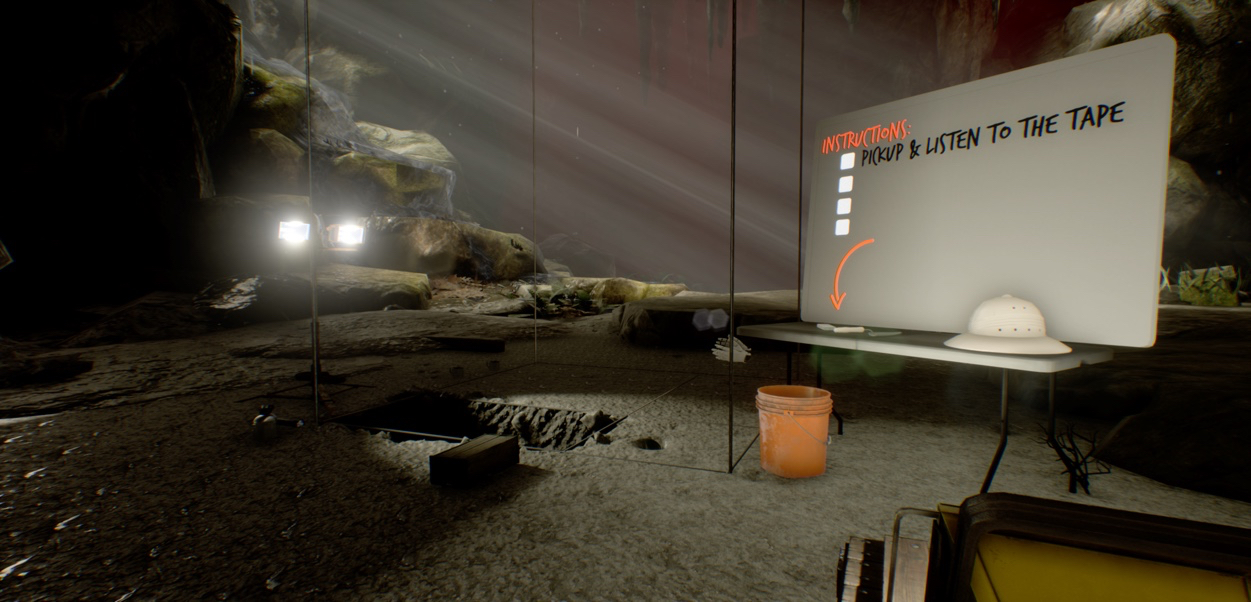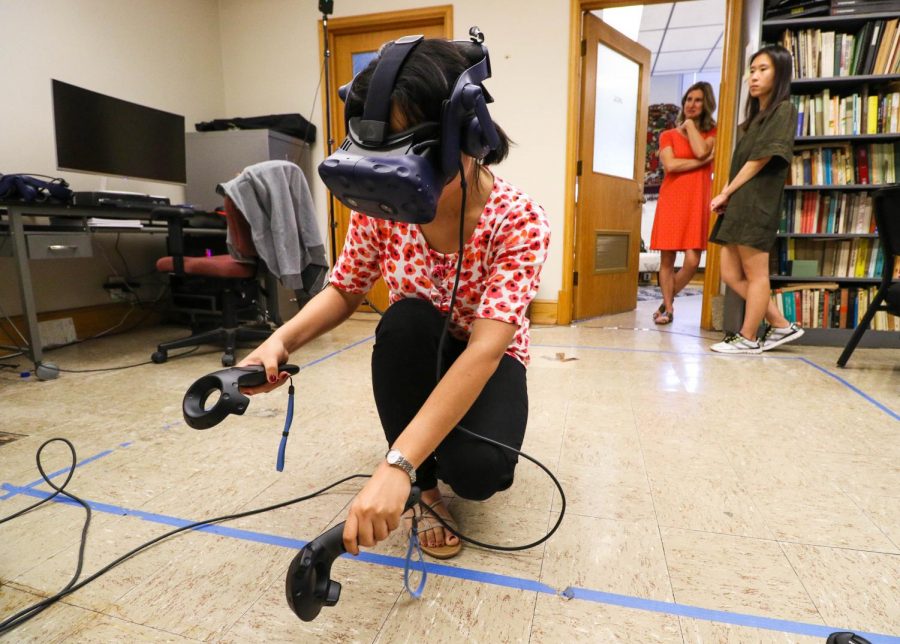Dig deep: VR redefines learning about archaeology
Graduate student Xuehui Chao works the virtual reality system for ANTH 399, currently in development, in Davenport Hall on Sep. 19.
Sep 20, 2018
Laura Shackelford, associate professor in anthropology at the University, is pioneering a new teaching method for the field of archaeology.
For the past year, Shackelford and her team of graduate students and professors in other departments have been developing ANTH 399. The class will use virtual reality technology to give students a new perspective on field sciences and allow them to simulate getting a real archaeological experience.
The class will teach archaeological field methods as if students are going out into a field and excavating a real site.
The course will begin in the spring and meet three times a week. Twice a week, students will work from inside a classroom to discuss projects, talk about conceptual material and plan for their lab.
Once a week, students will partake in a lab, where they work in pairs. Two students will be assigned to each VR station, with one student wearing the headset and doing the excavation mission while the other helps them through the activity and takes notes.
Get The Daily Illini in your inbox!
The use of virtual reality technology is a large step in accessibility for students, Shackelford said.
Most people are not interested in archaeology, as a hobby or a career, unless they can give it a try. With this new format, anybody who is interested can try it. Shackelford presumes they will get a lot of anthropology or anthro-CS majors at first but is excited to reach other students as well.
“I hope that it’ll be a draw for all students. I hope that eventually, as we grow the class in size, we’ll have a greater number of students across disciplines because that’s the idea, that this is a fun and interesting subject, and anyone can try it,” Shackelford said.
The field of archaeology is very hard to teach in a classroom because of its hands-on focus. In addition, in order to major in archaeology, students are required to go to a field school, which is often far away and hard for students to access. It can be costly, require extra time and travel and poses a challenge for those with mobility or familial issues.
“What we have found with field sciences generally, not just archaeology, this is especially burdensome on minority students — (the) result is that fewer and fewer students (are) going into archeology,” Shackelford said. “As well as other field sciences, that’s one of the problems that this will counter: to provide opportunity.”
Cam Merrill, a graduate student working on Shackelford’s team, specializes in human computer interaction. Given his experience with virtual reality technology, he believes that this method of teaching is more effective.
“Having highly active environments leads to immersion, flow state and better short- and long-term memory. It’s very interesting to see how you can use these paradigms to learn,” Merrill said.

A virtual environment where Shackelford’s team has been working on archaeological excavation tasks.
Merrill’s tasks on the team as a tech leader often include dealing with the virtual reality technology, helping with project management, doing 3D coding and taking Shackelford’s vision and best fitting it to the technology that they’re shooting for.
Although Shackelford is an expert in archaeology, she stresses the importance of a multidisciplinary team.
David Huang, associate professor of human resource development in the College of Education, joined Shackelford on the project from the very beginning, helping her develop the proposal. His expertise in game-based learning brought additional perspective to the team.
“Learning as part of the interdisciplinary collaboration, we learn from each other. It definitely makes the project experience much more interesting, and I learn a lot from my teammates,” Huang said.
Huang said that the perspectives of his teammates raise different questions about a program such as this. For instance, the question of how to address the needs of students from different backgrounds was discussed.
“It’s very positive and rewarding as a teacher and researcher,” Huang said.
Although the class is being piloted as just a supplement to field school, the team aims to eventually have the option to replace students having to go to a field school altogether with these virtual reality lessons.
They also hope to replace and correct common stereotypes about archaeology that popular video games propel.
“Since it does have such a public appeal, that’s great, but there’s also a problem because all of these games and popular media displays of archaeology focus on a lot of the wrong things like treasure hunting, colonial perspective on invasion. We want to address that stereotype and replace it with some of the more responsible perspectives on archaeology,” Shackelford said.
Huang said the team’s hopes for the project include bringing this type of learning to other disciplines and subjects.
“This project is a good starting point on this campus. It’s an excellent starting point that social science can be fun to be part of, to show people that this is doable,” Huang said. “Second, I would like to see the delivery to be scaled up multi-subject areas because it opens up access to quality learning experience for all the students on campus eventually.”
While they have made significant progress on the project, they continue to make changes and improvements and can only do so with the help of student volunteers.
“Students give us feedback because this is for students, first and foremost, and sharing their ideas with us is the most important part,” Huang said.






